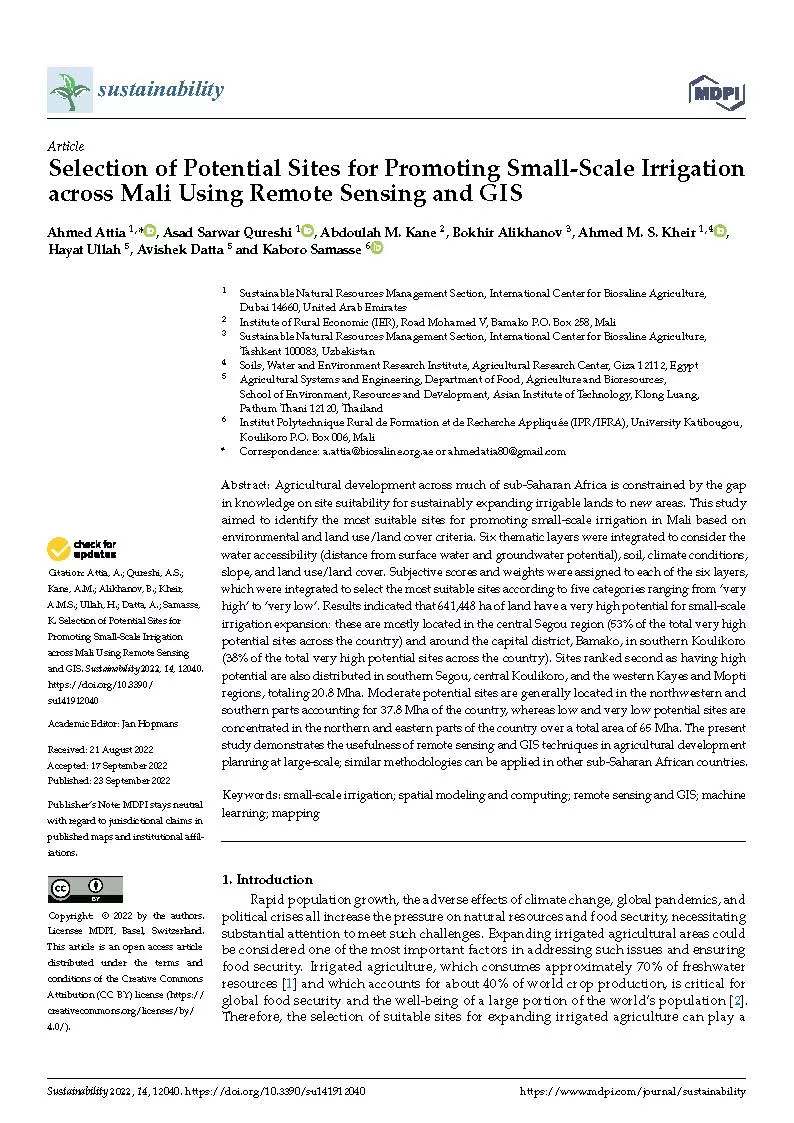Selection of Potential Sites for Promoting Small-Scale Irrigation across Mali Using Remote Sensing and GIS
Agricultural development across much of sub-Saharan Africa is constrained by the gap in knowledge on site suitability for sustainably expanding irrigable lands to new areas. This study aimed to identify the most suitable sites for promoting small-scale irrigation in Mali based on environmental and land use/land cover criteria. Six thematic layers were integrated to consider the water accessibility (distance from surface water and groundwater potential), soil, climate conditions, slope, and land use/land cover. Subjective scores and weights were assigned to each of the six layers, which were integrated to select the most suitable sites according to five categories ranging from ‘very high’ to ‘very low’. Results indicated that 641,448 ha of land have a very high potential for small-scale irrigation expansion: these are mostly located in the central Segou region (53% of the total very high potential sites across the country) and around the capital district, Bamako, in southern Koulikoro (38% of the total very high potential sites across the country). Sites ranked second as having high potential are also distributed in southern Segou, central Koulikoro, and the western Kayes and Mopti regions, totaling 20.8 Mha. Moderate potential sites are generally located in the northwestern and southern parts accounting for 37.8 Mha of the country, whereas low and very low potential sites are concentrated in the northern and eastern parts of the country over a total area of 65 Mha. The present study demonstrates the usefulness of remote sensing and GIS techniques in agricultural development planning at large-scale; similar methodologies can be applied in other sub-Saharan African countries.
